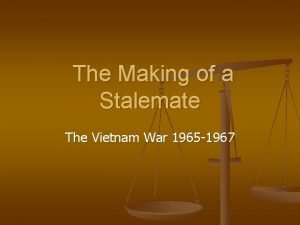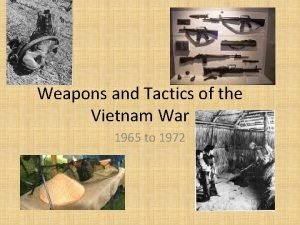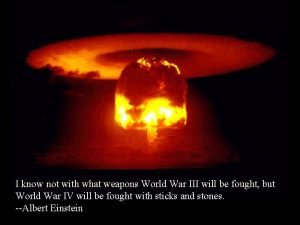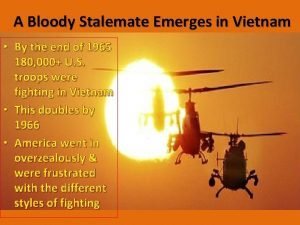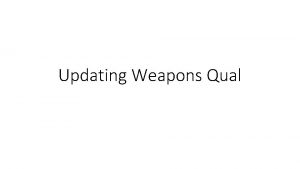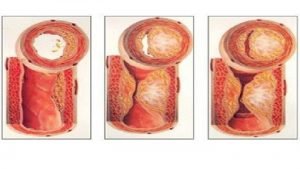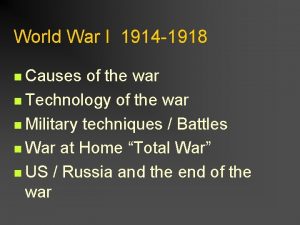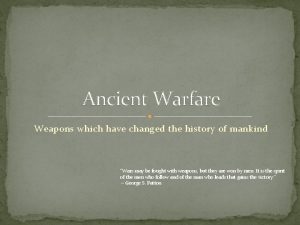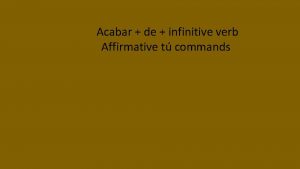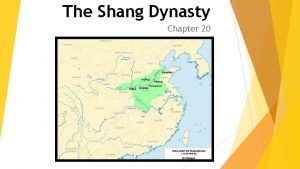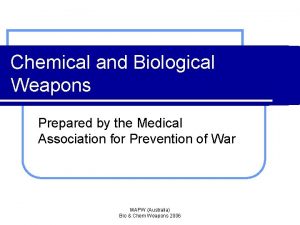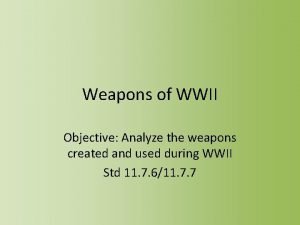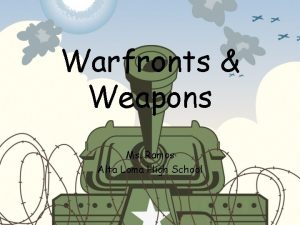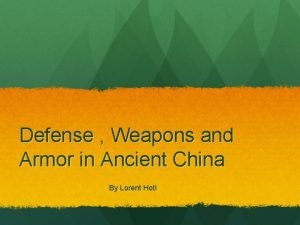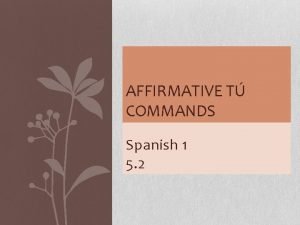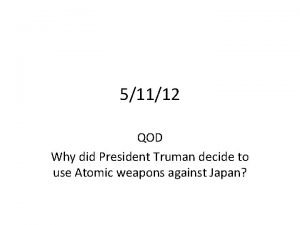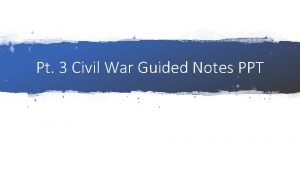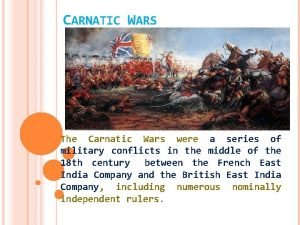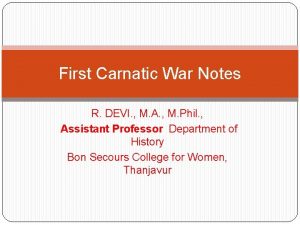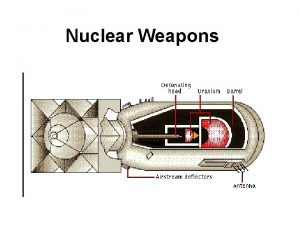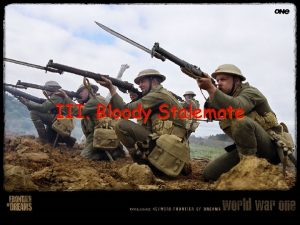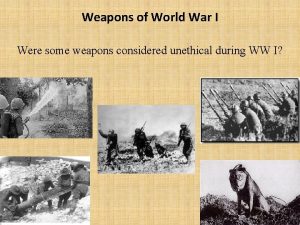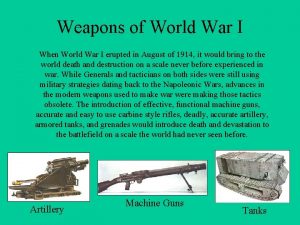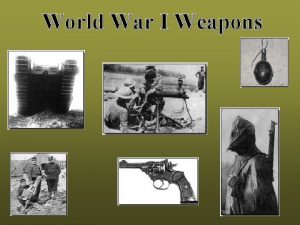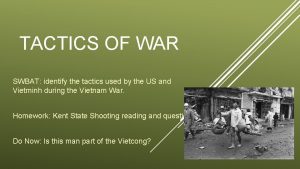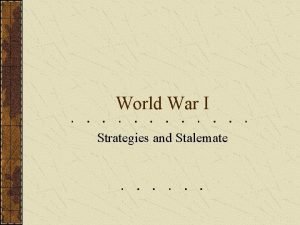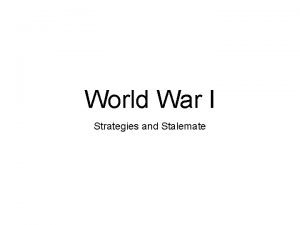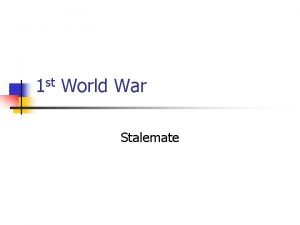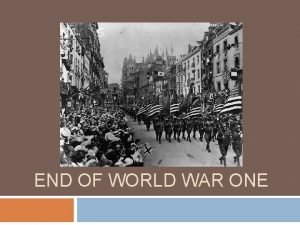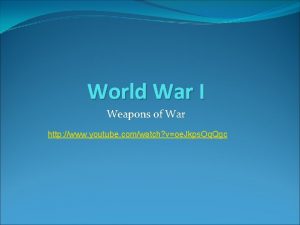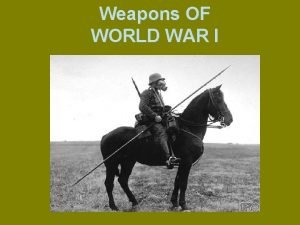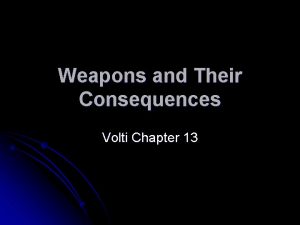World War I Weapons Tactics Class Notes STALEMATE













































- Slides: 45

World War I Weapons & Tactics Class Notes

STALEMATE • Allies halt Central Powers; both sides dig in • No flanks for either side to attack • Barbed wire entanglements up to 150’ deep • Neither side gains more than 10 miles in over 2 years • Countries will try new technology to break the stalemate • Mass is supreme principle • Massed assaults • Massed fires

Trench Warfare • Machine gun and artillery make it difficult to attack a trench • Huge artillery preps make “No Man’s Land” virtually impassable • Huge casualties for attackers

Stalemate • The Tactics of Trench Warfare – Generals were unprepared for the development of trench warfare: their training was in army mobility – Main strategy: • To use a combination of heavy artillery and MORE MEN to break the trench line • First, to use artillery to “soften up” the enemy and destroy barbed wire • Second, to fix bayonets and lead a charge across No Man’s Land • Third, to kill the enemy in hand-to-hand combat. – Exceptions, by mutual consent: • No bombing the latrines. • No bombing before breakfast. • No bombing on major holidays.

Trench Diagram #1



Trench diagram #2

Life in the hole • The Equipment: – 1 rifle, 1 bayonet, 170 rounds of ammo, 1 gas mask, 1 shovel, wire cutters, a full water bottle, food rations, extra clothing, medical supplies, portable cooking stove and fuel, personal belongings • Total Weight: 60 lbs.

This is a typical BRITISH soldier. Soldiers were expected to carry their equipment with them at all times. They were supposed to keep it clean and in good condition.

No smiling and relaxed faces… No fun with mates… No clean uniforms… Their equipment is scattered everywhere… Boredom is obvious…

Real life in the trenches was MISERABLE


The Trench System

British trench, Thiepval Woods, France

RUTHLESS TACTICS • Chemical warfare made trench warfare more horrible • Mustard/Blister agents deployed • First used on French in 1915



The Flamethrower • Flame Thrower • German translation of Kleineflammenwerfer • Backpack full of flammable liquid and hose connecting to flame • Used against dug in positions: machine gun nests, trenches • First used at Hooge against British • Cumbersome, limited firing range (20 yds), and goes up easily with one shot



Poison Gas • Gas first used by French (Bromine) - Tear gas • 1915 at 2 nd battle of Ypres – Germans introduce Chlorine gas – Chlorine eats away repertory organs

Poison Gases Cont’d • Phosgene • Died from convulsions from coughing and choking • Time released, breathed in in large quantities and takes 48 hours to take effect • Cause logistic nightmares, because it clogged med. • Mustard Gas – Used against Russians caused blisters externally and internally, completely odorless • Poison Gases are deemed impractical b/c they are at the mercy of the wind



Gas Masks • British develop the first gas mask after Ypres • Then, came thick cotton and a head band, • Developed by the French - Repertory device






Hand Grenade • • • First, bombing parties Waited percussion or time fuse (Homemade) Jam pot Hair brush (killed 1/5 of the man who used it) Mills Bomb, (British) were taught classes to throw



The Tank • Developed by British • Used against trenches, thought to be ideal way of going over trench and clearing “No man’s Land” • Mark I introduced at Cambrai – - advanced 12 miles • Later models would be equipped w/ guns, both canon and machine gun



Exploding Artillery Shells • Shells filled with powder, impact explosion and then powder ignited. • Von Falkenhyn – wanted a war of attrition and a weapon that could produce the most amount of damage

Submachine Guns • Submachine Guns were portable, automatic weapons used by an individual soldiers when clearing opposing trenches • German MP 18 – snail drum – 20 – 32 rounds in drum

Trench Mortars • Narrow, vertical, cylindrical tubes in which an explosive was placed and shot out of • Perfect delivery system for tight spaces of trenches

Air War • - Planes – Early ideas involved throws spears and using pistols – Then equipped with machine guns • Roland Garros – Perfect for scouting and delivering supplies



Air War • Zepplin – Used as bombers • Observation balloons – Flown several hundred yards behind one’s own trenches and used to describe the opposing trenches

 Did the vietnam war end in a stalemate
Did the vietnam war end in a stalemate Us weapons vietnam war
Us weapons vietnam war Weapons of the cold war diagram
Weapons of the cold war diagram Chapter 19 from stalemate to crisis
Chapter 19 from stalemate to crisis A bloody stalemate
A bloody stalemate In greenfoot, you can cast an actor class to a world class?
In greenfoot, you can cast an actor class to a world class? Iwq option
Iwq option Leaders book example
Leaders book example Mesopotamia weapons
Mesopotamia weapons Ephesians weapons of warfare
Ephesians weapons of warfare Weapons of righteousness
Weapons of righteousness The weapons we fight with
The weapons we fight with Weapons of wwi
Weapons of wwi Weapons
Weapons Jumano jewelry
Jumano jewelry Ancient warfare weapons
Ancient warfare weapons Abrir usted command
Abrir usted command Weapons
Weapons Shang abi
Shang abi Algonquin tools and weapons
Algonquin tools and weapons N233pa
N233pa Zeus and mnemosyne
Zeus and mnemosyne Lol 450 champions
Lol 450 champions Kitchen equipment scavenger hunt answers
Kitchen equipment scavenger hunt answers Advanced weapons
Advanced weapons Weapons معنى
Weapons معنى Weapons
Weapons Caddo tools and weapons
Caddo tools and weapons Weapons
Weapons Bronze age weapons
Bronze age weapons Three sisters bows
Three sisters bows Mayan weapons
Mayan weapons Vin diesel has ten weapons
Vin diesel has ten weapons Warfront weapons
Warfront weapons Std atomic string
Std atomic string Struggle is not against flesh and blood
Struggle is not against flesh and blood Military traditions and customs
Military traditions and customs Ancient chinese armor and weapons
Ancient chinese armor and weapons 3 affirmative commands in spanish
3 affirmative commands in spanish Why did president truman decide to use atomic weapons?
Why did president truman decide to use atomic weapons? Facteur g
Facteur g Ppt
Ppt Second carnatic war
Second carnatic war First carnatic war notes
First carnatic war notes War at home and abroad madison
War at home and abroad madison Description
Description
